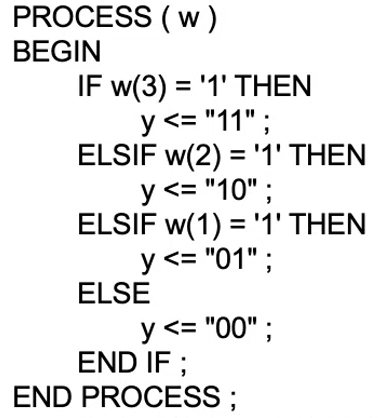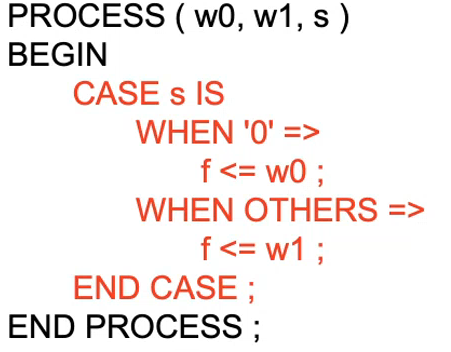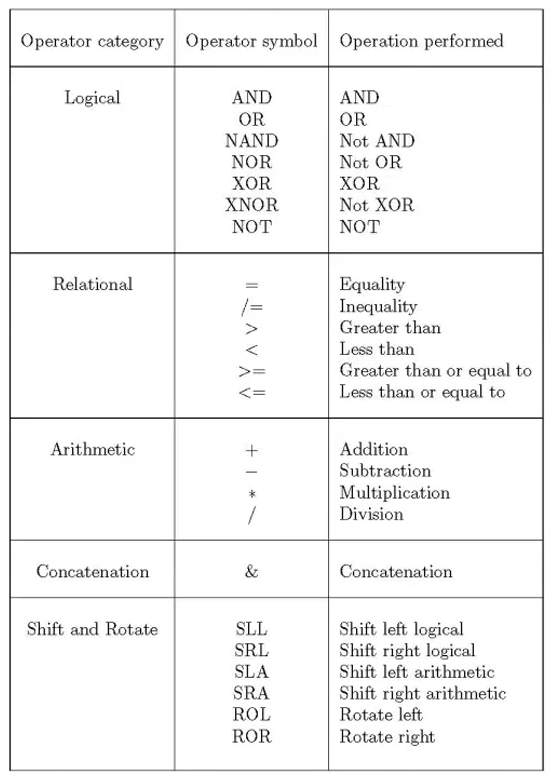VHDL Tricks
Contents
VHDL Packages
Entities
Generics
Entities can have properties which can be set by the implementation during instantiation.
| |
If an assignment requires the length of a generic, we can use the OTHERS keyword as a wildcard. (Refer to $n$-bit registers)
To set these values during instantiation, we use the GENERIC MAP declaration.
| |
Buffer Ports
Apart from the IN and OUT modes of a port, a port can also have a BUFFER mode - which allows for reading and writing from and to that port.
Multiplexing with SELECT
Note: Evaluation of all cases is done concurrently
- f <- w0 when S = 0, else w1
| |
- 4-to-1 (2bit)
| |
Generation Statements
Shorthand to instantiate multiple components where they only differ by one variable. (i.e. multiple muxers which folow a pattern)
| |
Conditional Generation with IF

Conditional Assignment with WHEN ... ELSE
| |
- Can also combine multiple cases
- Note: They are evaluated sequentially in order (left to right)
| |
Concatenation using &
Can define a signal with a length as the sum of two other signal lengths
| |
Processes
Statements are executed sequentially.
A process listens to a "sensitivity list", and only triggers when a value inside the sensitivity list updates. Only variables that are used in a condition or assignment should appear in a sensitivity list
| |
- Assignments are committed at the end of the process
NOTE: Processes that describe combination logic (circuits without memory) MUST assign a value to every output signal for every execution path
IF ... THEN ... ELSIF ... THEN ... ELSE ... END IF
IF statements can be used inside a PROCESS

CASE

FOR ... LOOP
| |
WAIT UNTIL
Makes the process always run, but only continues when a condition is true
| |
Operators
